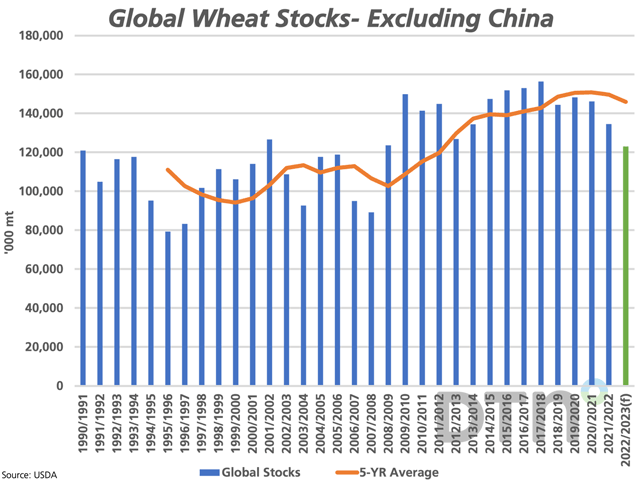
The August WASDE report included a modest change in global wheat stocks for 2022-23, although a different picture is painted when China's stocks are excluded.

The August WASDE report included a modest change in global wheat stocks for 2022-23, although a different picture is painted when China's stocks are excluded.
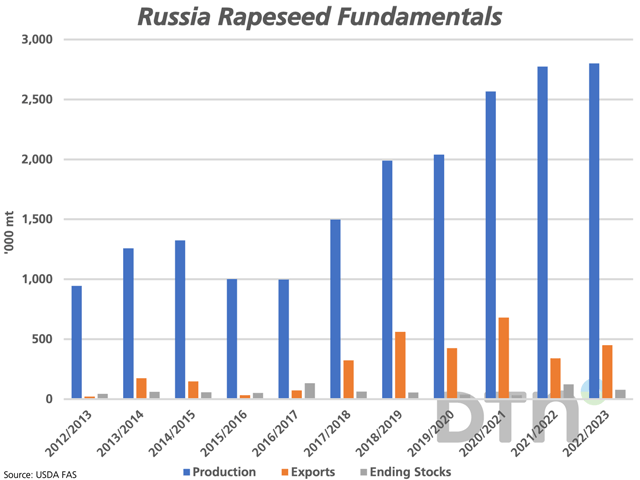
While media is reporting that Russia is considering removing a ban on rapeseed exports from eastern growing regions into Asian countries, current USDA estimates do not indicate a threat in 2022-23.
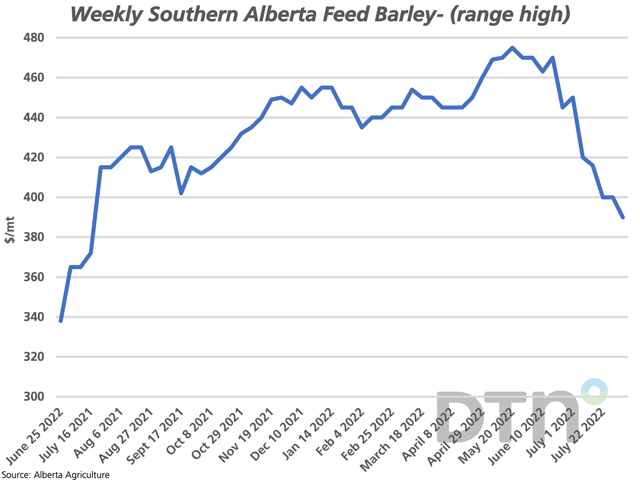
Southern Alberta feed barley trade is reported at the lowest level seen in over one year. The forecast for 2022-23 shows ending stocks remaining close to all-time lows, while China's demand remains a wild card.
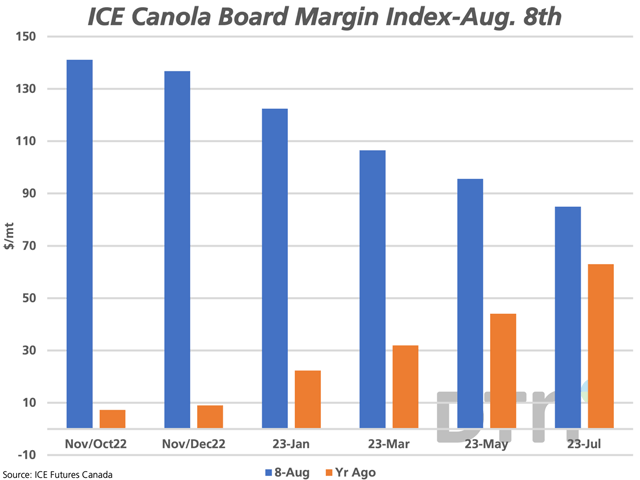
The ICE Canada Canola Board Margin Index is not only signaling a much stronger index than seen this time last year but is also signaling front-end demand as harvest nears.
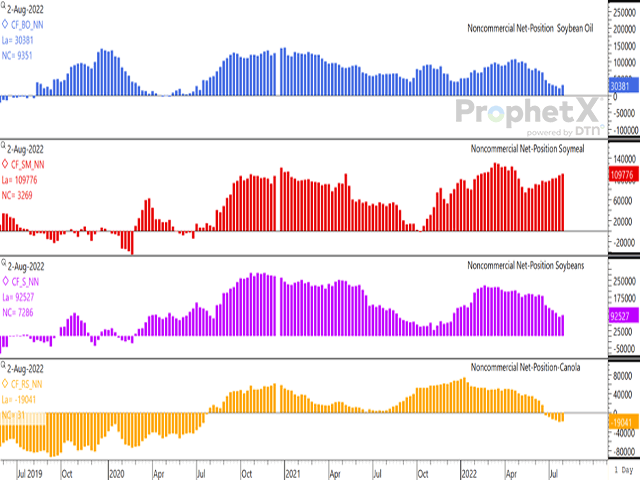
CFTC data as of Aug. 2 shows noncommercial traders increasing their bullish net-long position in soybean oil, soymeal and soybean futures, while paring their bearish net-short position in canola futures.
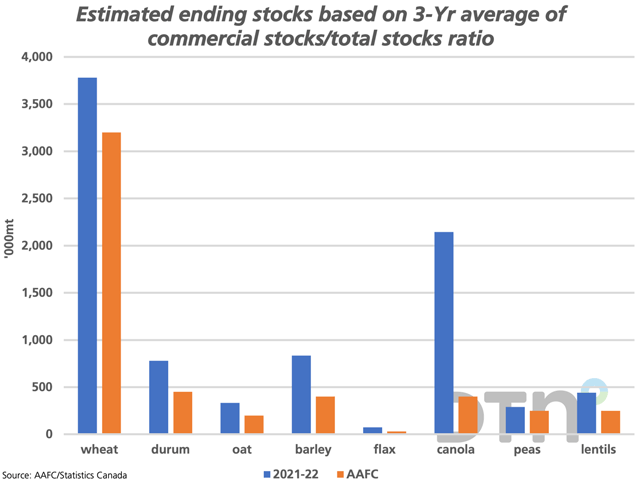
The three-year average commercial stocks/total stocks ratio is used to forecast 2021-22 ending stocks for select grains. The end result is higher ending stocks for the select crops than currently forecast by AAFC, although the model fails to accurately account for canola...
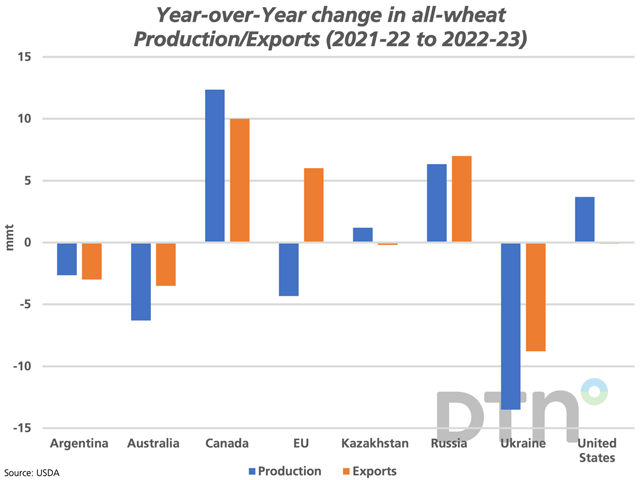
Canada is one of the three major wheat exporters forecast to increase exports in 2022-23.
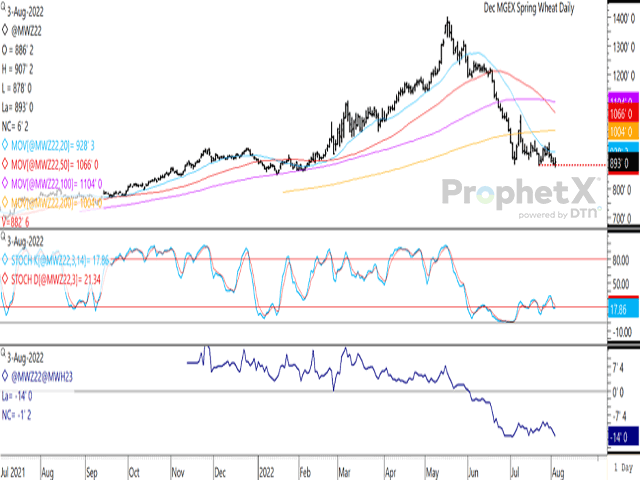
Nearby spring wheat futures broke through lows reached over the past four weeks on Wednesday only to change direction and close higher.
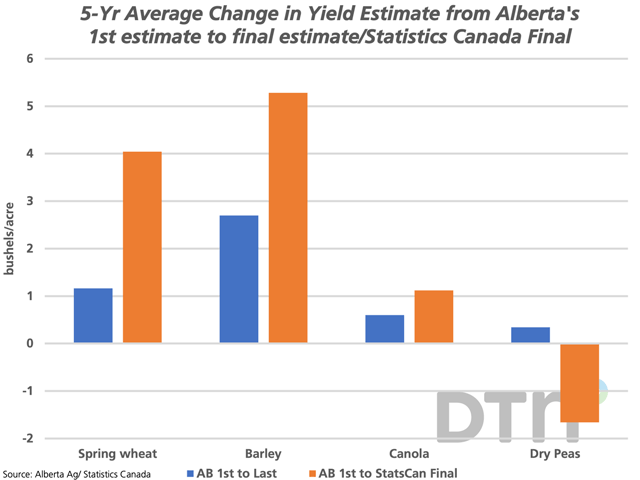
This study looks at yield changes from Alberta Agriculture's first estimated yield to their last estimate of the season over the past five years to find that crop yield estimates tend to be revised higher.
DIM[2x3] LBL[blogs-canada-markets-list] SEL[[data-native-ad-target=articleList]] IDX[2] TMPL[news] T[]
DIM[2x3] LBL[blogs-canada-markets-list-2] SEL[[data-native-ad-target=articleList]] IDX[5] TMPL[news] T[]